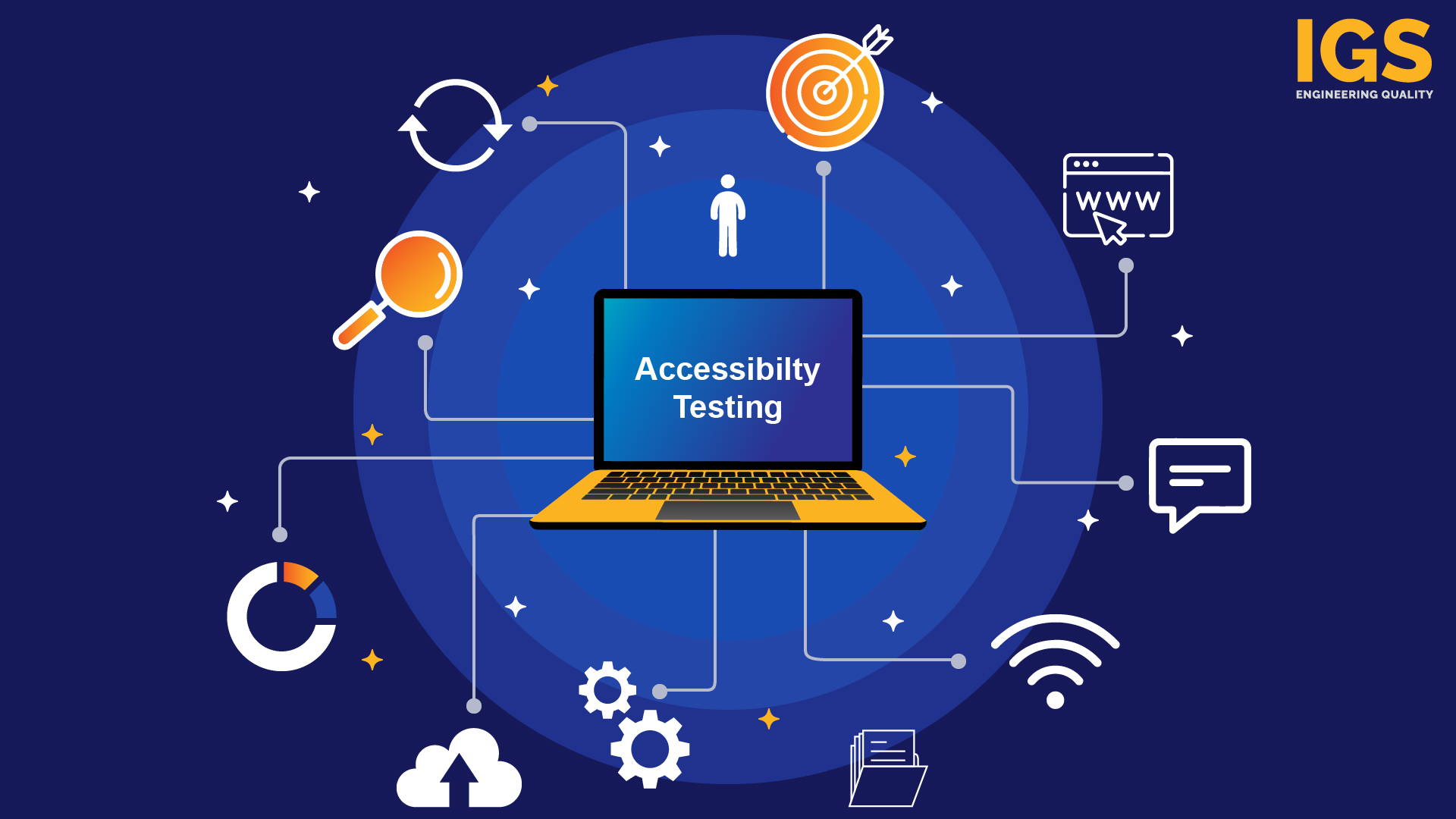What is Accessibility Testing? A Complete Guide

In our fast-paced digital world, the importance of accessibility testing cannot be overstated. As technology becomes more integrated into our daily lives through websites, apps, and online platforms, ensuring that everyone, regardless of ability, can access and utilize these digital resources is crucial. This article aims to highlight the significance of accessibility testing, explaining its definition, core principles, and its role in fostering an inclusive online environment.
Accessibility testing involves evaluating digital products or services to ensure they are usable by people of all abilities, including those with disabilities. The main objective is to identify and address any barriers that might hinder access for individuals with diverse needs, such as visual, auditory, motor, or cognitive impairments.
Key Principles of Accessibility Testing:
Perceivability: Information and user interface elements should be presented in a way that all users, regardless of disabilities, can understand.
Operability: Ensure that all functionalities are usable through various assistive technologies like keyboards, screen readers, and voice commands.
Understandability: Make sure that information and the operation of the user interface are clear and straightforward, minimizing confusion for users.
Robustness: Ensure compatibility with different user agents, assistive technologies, and evolving tech to future-proof digital assets.
Accessibility testing encompasses a variety of tools and methods, from examining screen readers and keyboard functions to analyzing color contrasts. While automated tools are crucial, human testers add a valuable perspective, empathizing with users facing real-world challenges to provide a more comprehensive evaluation.
Accessibility Testing vs Usability Testing – Understanding the Key Differences
In the dynamic world of software development and design, two crucial testing methodologies—accessibility testing and usability testing—stand as pillars ensuring that digital products not only function but also cater to diverse user needs while providing an exceptional user experience.
Accessibility Testing: Enabling Inclusivity Beyond Limits
Accessibility testing champions the cause of making digital content and interfaces accessible to users with disabilities, ensuring seamless navigation and interaction for individuals with diverse abilities—be it visual, auditory, motor, or cognitive impairments.
Key facets of accessibility testing involve:
Standards Compliance: Adherence to established accessibility standards such as WCAG (Web Content Accessibility Guidelines) to ensure the software meets specific accessibility criteria.
Assistive Technology Integration: Utilizing tools like screen readers, keyboard navigation, voice recognition software, and other assistive technologies to assess their compatibility and effectiveness with the software.
Combining Manual and Automated Approaches: Employing both manual inspection and automated tools to scrutinize aspects like color contrast, keyboard navigation, image alternative text, and semantic HTML structure.
The primary objective of accessibility testing is to eliminate barriers, fostering an inclusive digital landscape for users irrespective of their abilities.
Usability Testing: Crafting an Intuitive User Journey
Usability testing, in contrast, revolves around refining the overall user experience—evaluating the product’s intuitiveness, efficiency, and satisfaction in user interaction, going beyond accessibility considerations.
Key components of usability testing encompass:
User-Centric Evaluation: Testing with representative users to observe and gather feedback on their interactions, informing improvements in navigation, content presentation, and overall user experience.
Task-Based Analysis: Assigning specific tasks to users to gauge how easily and effectively they navigate and accomplish these tasks within the software, pinpointing areas for enhancement.
Iterative Refinement: Embracing an iterative process where feedback drives design enhancements before subsequent testing phases. The objective of usability testing is to craft an intuitive, user-friendly interface that maximizes user satisfaction and efficiency.
Understanding the Interplay: While distinct in their focus, accessibility and usability testing intertwine. An accessible design doesn’t inherently ensure usability, and a highly usable interface might inadvertently exclude users with disabilities if not designed inclusively.
Successful digital products strike a harmonious balance between accessibility and usability by integrating inclusive design principles from inception and consistently refining the interface through comprehensive accessibility and usability evaluations.
Key Strategies for Conducting Accessibility Testing in Mobile Apps:
Understanding Accessibility Guidelines: Get familiar with established accessibility standards like WCAG (Web Content Accessibility Guidelines) or Mobile Web Best Practices. These serve as a foundation for developing mobile apps that are accessible to everyone.
Utilizing Accessibility Testing Tools: There’s a range of tools designed to assist in accessibility testing. They can pinpoint issues concerning color contrast, screen reader compatibility, keyboard navigation, and more. Some popular ones are Axe, Accessibility Scanner (for Android), and VoiceOver (for iOS).
Testing with Real Users: Conduct usability tests with people who have disabilities. Their insights while navigating the app can highlight potential accessibility barriers and areas for improvement.
Considering Multiple Assistive Technologies: Ensure the app works well with various assistive tools, like screen readers, voice commands, magnifiers, and alternative input methods.
Evaluating Navigation and Interaction: Confirm the app’s ease of use across different input methods—touch, voice, keyboard—and ensure the content flow makes sense and is clear.
Addressing Color and Contrast: Check that text, images, and interactive elements have suitable color contrast to aid users with visual impairments.
Providing Alternative Content: Include alternative text for images, transcripts for audio content, and captions for videos. These additions ensure multimedia content is accessible to everyone.
Can accessibility testing be automated?
When evaluating accessibility features, it’s crucial to account for real-world user scenarios to pinpoint any obstacles that might impede the user experience for individuals with diverse abilities. Relying solely on emulators and simulators isn’t sufficient; conducting tests on genuine devices is essential to gauge the full scope of accessibility provided by the user interface (UI) and its actual impact on end-users.
However, testing on physical devices can pose challenges due to the cost and in-house maintenance burden for companies. This is where leveraging a real device cloud for testing becomes a cost-effective solution under genuine user conditions. Platforms such as Browserstack Automate present an advantageous option by offering access to over 3000 real browser device combinations. This expansive range ensures broader coverage and incorporates advanced accessibility features like screen readers, facilitating comprehensive accessibility testing.
